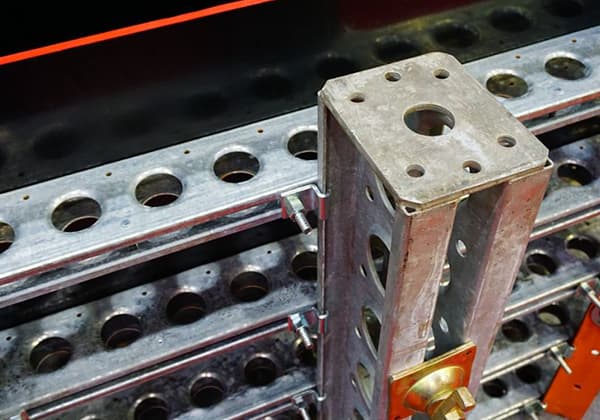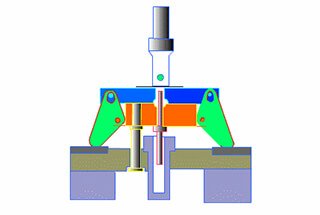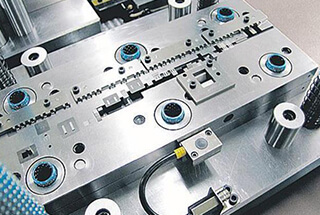What is a four column hydraulic press?
The Four-Column Hydraulic Press is a type of mechanical equipment that is used to process various materials such as metal, plastic, rubber, wood, powder, and others by utilizing the static pressure of hydraulic oil generated by an oil pump.
See also:
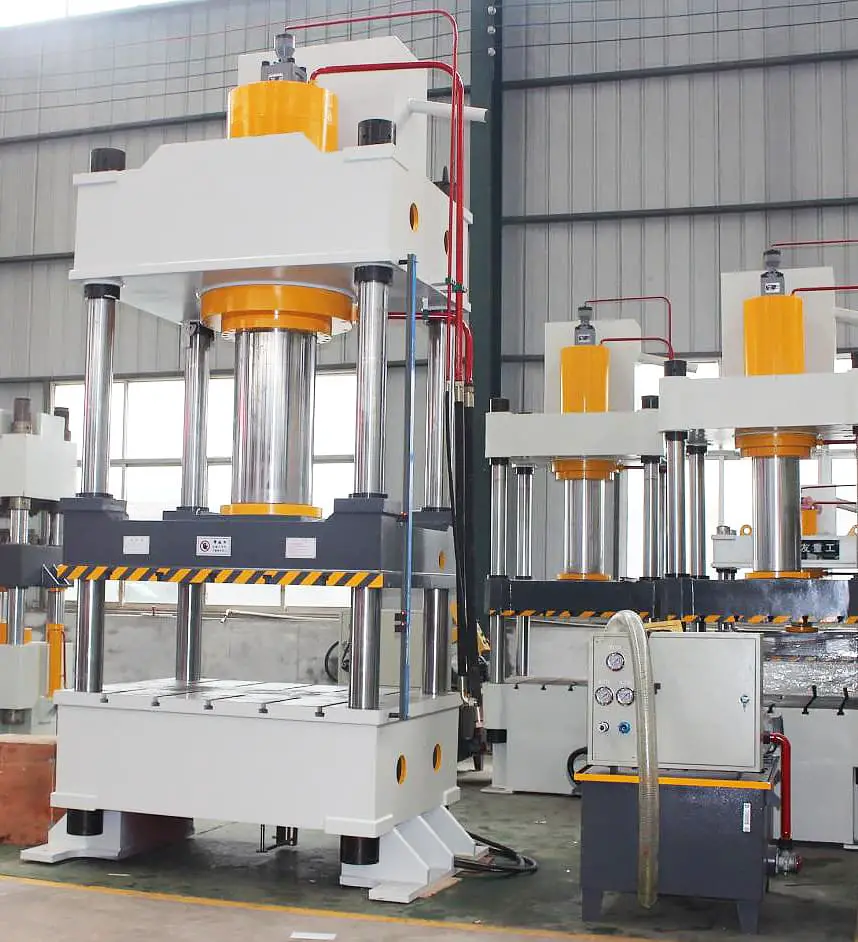
What is the working principle of the four column hydraulic press?
The hydraulic transmission system of a Four-Column Hydraulic Press is comprised of five components: the power mechanism, control mechanism, executive mechanism, auxiliary mechanism, and working medium.
The power mechanism typically uses an oil pump as its source of power, which is usually a product oil pump. To satisfy the requirements for the actuator’s movement speed, one or more oil pumps are selected. These can include a gear pump for low pressure (oil pressure below 2.5MP), a vane pump for medium pressure (oil pressure below 6.3MP), or a plunger pump for high pressure (oil pressure below 32.0MP).
This hydraulic press is used for pressure processing and forming various plastic materials, such as extruding, bending, and stretching stainless steel plates, as well as cold pressing metal parts. Additionally, it can be used for pressing powder products, grinding wheels, bakelite, and resin thermosetting products.
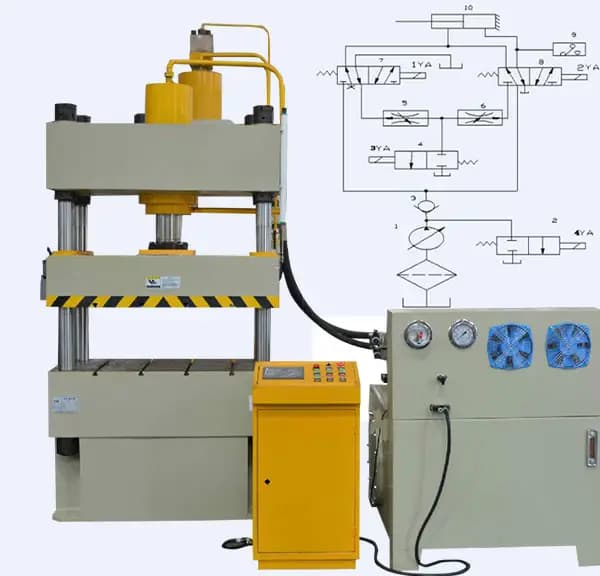
Working medium of four column hydraulic press
Evolution process of working medium
Initially, the hydraulic press used water as its working medium. However, to enhance lubrication and reduce corrosion, a small amount of emulsified oil was added to form an emulsion as the working medium.
Later in the late 19th century, oil presses with mineral oil as the working medium emerged. This type of oil has excellent lubrication properties, resistance to corrosion, and a moderate viscosity, which enhances the performance of the hydraulic press.
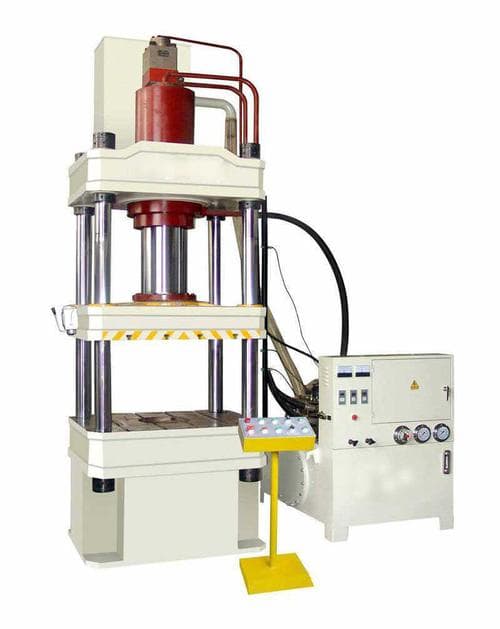
During the second half of the 20th century, a new type of water-based emulsion was developed. Unlike the original “oil in water” emulsion, this new form was an “oil in water” emulsion.
The external phase of the “oil in water” emulsion is oil, which offers lubrication and corrosion resistance properties similar to oil. However, its oil content is low, making it less prone to combustion.
Despite its benefits, the cost of the water-based emulsion is relatively high, which has limited its widespread use.
Function of the working medium
The working medium used in the hydraulic press serves a dual purpose: it not only transmits pressure but also ensures that the machine’s working parts are sensitive, reliable, long-lasting, and have minimal leakage.
Basic requirements for working medium
The basic requirements for the working medium of the hydraulic press are as follows:
- Appropriate fluidity and low compressibility to enhance the transmission efficiency.
- Ability to prevent rust and corrosion.
- Good lubrication performance.
- Easy to seal.
- Resistance to oxidation, stability in performance, and ability to maintain optimal performance over a long period of time without degradation.
What are the types of four column hydraulic presses?
The Four-Column Hydraulic Press, also known as simply the Hydraulic Press, is a machine powered by liquid pressure, which is based on Pascal’s law. There are many different types of hydraulic presses available.
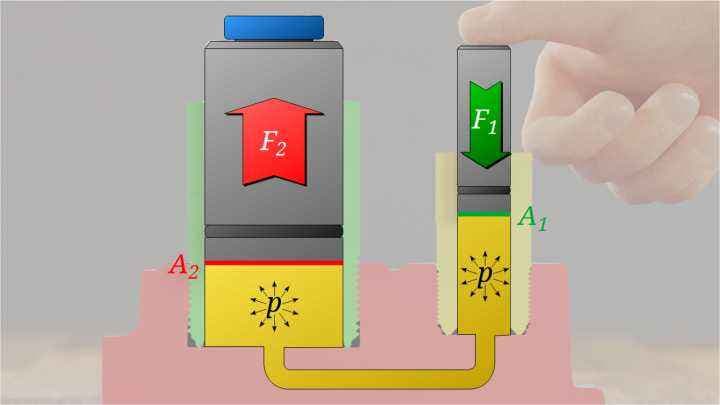
The applications of hydraulic presses vary based on the specific requirements. There are two main types of hydraulic presses based on the type of liquid used for pressure transmission.
The hydraulic press generates a substantial total pressure, making it a common choice for forging and stamping operations.
The forging hydraulic press can be further divided into two types: die forging hydraulic press and free forging hydraulic press. The die forging hydraulic press requires a mold, while the free forging hydraulic press does not.
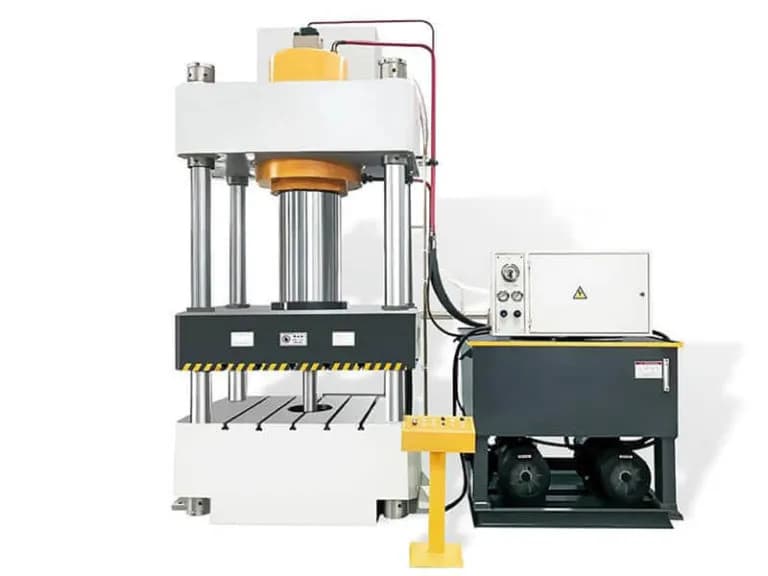
Components of four column hydraulic press
The Four-Column Hydraulic Press consists of two main components: the main machine and the control mechanism.
The main machine includes the hydraulic cylinder, beam, column, and liquid filling device. The power mechanism is composed of an oil tank, high-pressure pump, control system, motor, pressure valve, directional valve, and other components.
The hydraulic press is ideal for the pressing process of plastic materials, including powder product molding, plastic product molding, cold (hot) extrusion metal molding, sheet stretching and transverse pressing, bending, turning, correction, and other processes.
The four-column hydraulic press has a standalone power mechanism and electrical system. It is controlled centrally using buttons and offers three operating modes: adjustment, manual, and semi-automatic.
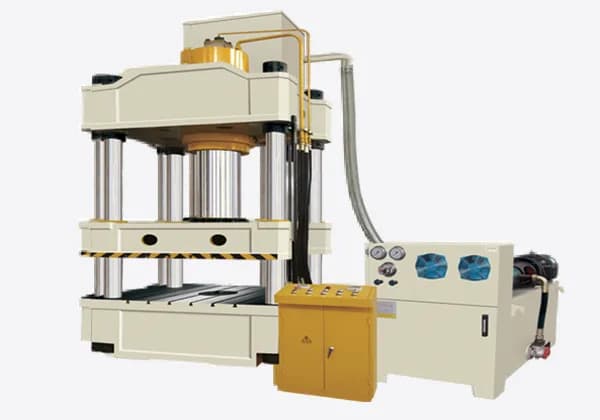
Structural form of four column hydraulic press
Hydraulic presses are classified into two types based on the direction of the force applied: vertical and horizontal.
The majority of hydraulic presses are vertical and are used for extrusion purposes, while structural presses are typically horizontal.
In terms of structural design, hydraulic presses come in several varieties including double column, four column, eight column, welded frame, and multi-layer steel strip winding frame. Medium and small vertical hydraulic presses also come in a C-frame type.
The C-frame hydraulic press is open on three sides, making it easy to operate, but lacks rigidity. On the other hand, the welded frame hydraulic press for stamping has a good level of rigidity and is open at the front and back, but closed on the left and right.
In a vertical four column free forging hydraulic press, the oil cylinder is fixed in the upper beam, and the plunger is rigidly connected to the movable beam which is guided by the column and moves up and down due to the pressure of the working fluid. The beam has worktables that can move back and forth, and the upper anvil and lower anvil are installed under the movable beam and on the working table, respectively. The working force is carried by the frame composed of the upper and lower beams and columns.
For larger and medium-sized free forging hydraulic presses driven by a pump accumulator, three working cylinders are typically used to achieve three-stage working force. The working cylinder is also equipped with a balance cylinder and a return cylinder that apply upward force.
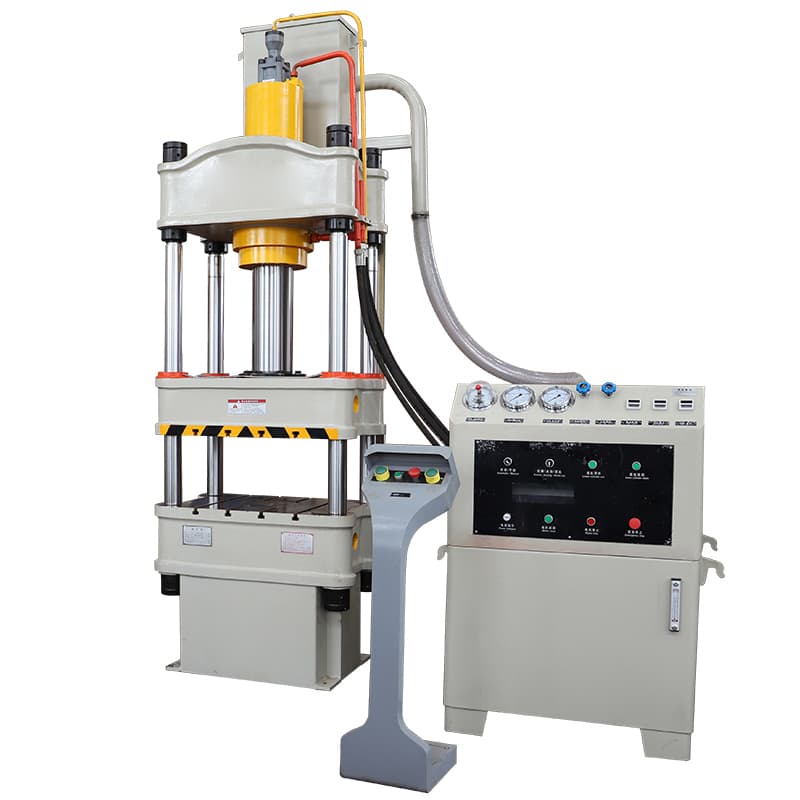
Equipment characteristics of four column hydraulic press
The machine is equipped with an independent power mechanism and electrical system, and it can be controlled centrally using buttons to achieve three working modes: adjustment, manual, and semi-automatic. The working pressure and pressing speed, as well as the stroke and range of no-load fast descending and decelerating, can be adjusted to meet the requirements of the pressing process. The ejection process can also be completed.
There are three process modes available: ejection process and stretching process, each with two process actions: constant pressure and constant stroke. The constant pressure forming process includes ejection delay and automatic return after pressing.
The machine has an independent power organization and electrical system, and it can be controlled centrally using buttons for adjustment and semi-automatic operations. The mobile work platform is driven by a frequency conversion controller, and its electrical equipment is a world-leading PLC programmable controller. The YH25-315D “T” type moving action platform has been improved in design and production, which enhances the automation level of the hydraulic press series, increases production power, and reduces operator labor intensity.
The hydraulic press uses liquid as the medium to transfer energy, and it has an advanced hydraulic circuit of the slave and master cylinder, resulting in low oil temperature. The idle travel speed is more than 10mm/s, the working speed is less than 20mm/s, and the equipment operates quietly with noise levels less than 75db when the sliding speed moves up and down.
The machine adopts a four column and three plate structure and has a vertical accuracy of the movable plate controlled by four precision guide sleeves. The parallel accuracy between any point on the lower working face and the upper working face is less than 0.08mm.
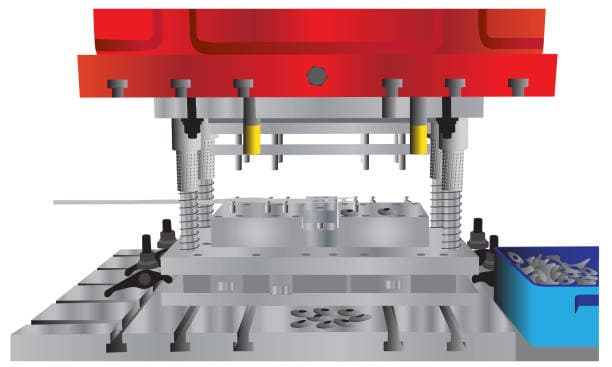
What are the product advantages of four column hydraulic press?
There are numerous types of hydraulic presses available in the market, each designed to be suitable for processing different parts and materials.
Many large-scale material processing and metal material production facilities now commonly use the four column hydraulic press because it is cost-effective and user-friendly.
So, what are the advantages of the Four-Column Hydraulic Press?
1. Precision forming, small tolerance and high precision
The pressure generated by the Four-Column Hydraulic Press is stable, which reduces die wear and leads to more precise product formation under numerical control. The forgings produced are of high quality, with minimal flash and small tolerances, resulting in high accuracy.
This hydraulic press allows for less cutting processing and eliminates the need for additional turning, milling, and planing processes. For instance, the tooth shape of cylindrical gears and bevel gears can be directly formed and produced.
2. The human-machine interface is interactive
The motor of the hydraulic press is digitally controlled, and the user can input simple displacement and speed parameters to achieve intelligent flexible process curve numerical control. This eliminates the need for the user to compile the process curve, making it extremely convenient to use.
3. High die life
Pressure numerical control ensures that the mold will not be overworked, worn, or damaged.
4. High efficiency and energy saving
The Four-Column Hydraulic Press has several energy-saving features, including no clutch friction energy consumption, no flywheel idle energy consumption, and the high efficiency of the motor. These features make the servo press both efficient and energy-saving.
5. High equipment reliability
The equipment of the Four-Column Hydraulic Press does not have any wearing parts, making it more durable. The motor rotor does not have windings, conductors, or permanent magnets, making it stronger than a permanent magnet servo motor. It is solid and reliable, as well as resistant to impacts. The maintenance-free equipment saves maintenance personnel and reduces the amount of time required for maintenance.
6. Intelligent mode adjustment
The body of the Four-Column Hydraulic Press is equipped with a tonnage meter that allows for the adjustment and testing of the mold under pressure control. The mold can be adjusted slowly and without stopping the machine, eliminating the need for special mold adjustment and test equipment and personnel. This saves on mold adjustment labor and reduces the amount of time required for the task.
7. Intelligent automatic numerical control
The operation of the Four-Column Hydraulic Press is controlled by high-speed computer intelligence, allowing for full automation without the need for manual operation.
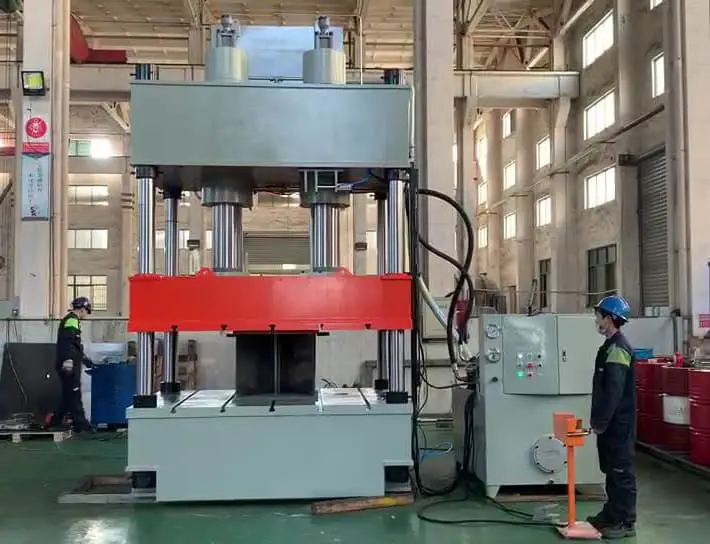
What are the benefits of using four column hydraulic press?
Reduce quality and save materials
For typical parts such as automobile engine brackets and radiator brackets, hydroformed parts are 20% to 40% lighter compared to stamped parts. For hollow stepped shaft parts, the weight reduction can be as much as 40% to 50%.
Reduce the number of parts and molds and reduce the cost of molds
Hydroforming parts typically only require one set of dies, while stamping parts often require multiple sets of dies. For example, the number of hydroformed engine carrier parts can be reduced from 6 to 1, and the number of radiator bracket parts can be reduced from 17 to 10.
It can reduce the welding amount of subsequent machining and assembly
For example, with the radiator bracket, the heat dissipation area increased by 43%, the number of solder joints was reduced from 174 to 20, the number of processes was reduced from 13 to 6, leading to an increase in productivity by 66%.
Improve strength and stiffness, especially fatigue strength
For instance, the rigidity of the radiator bracket formed through hydroforming can be increased by 39% in the vertical direction and 50% in the horizontal direction.
Lower production cost
According to statistical analysis of hydroforming parts in use, the production cost of hydroformed parts is 15% to 20% lower compared to stamped parts, and the cost of dies is 20% to 30% lower.
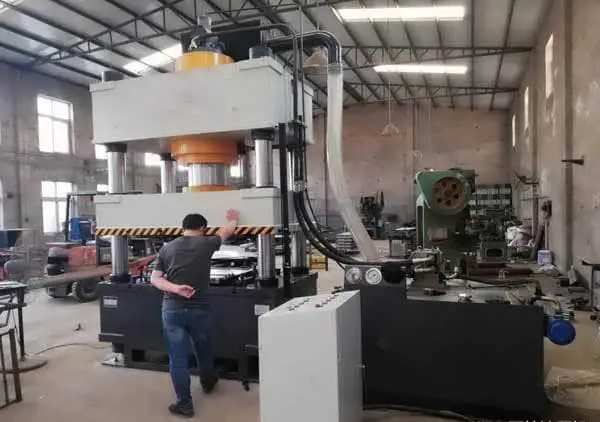
Safe operation of four column hydraulic press
- Before operating the hydraulic press, the operator must undergo training and gain mastery of the equipment’s performance and operating techniques.
- Clean all debris from the mold and wipe off any dirt on the hydraulic press rod before beginning operation.
- The hydraulic press must be installed with the power turned off and it is prohibited to activate it by striking the start button, handle, or foot switch.
- Properly install and align the upper and lower molds and adjust the mold clearance, ensuring that they are centered. Confirm that the molds are securely in place before starting the press.
- Before using the hydraulic press, run the equipment idly for 5 minutes to check the oil level in the tank, the sound of the oil pump, and for any leaks in the hydraulic unit, pipes, joints, and pistons.
- Conduct a pressure test by starting the equipment and checking if the pressure reaches the working pressure and if the equipment operates normally and reliably, with no leaks.
- Adjust the working pressure, but it should not exceed 90% of the equipment’s rated pressure. Test a sample workpiece, and then start production after it has passed inspection.
- For different hydraulic press configurations and workpieces, adjust the working pressure, number of presses, and holding pressure time during the press-fitting and calibration process to avoid damaging the molds and workpieces.
- Do not extend hands or heads into the working parts of the pressing plate and mold when the pressing plate of the machine body moves up and down.
- It is strictly prohibited to manipulate the workpiece in any way (knocking, stretching, welding, cutting, bending, or twisting) while applying pressure.
- Smoking, welding, cutting, and hot work are not allowed near the hydraulic press, and flammable and explosive materials should not be stored in the area. Adequate fire prevention measures should be taken.
- After using the hydraulic press, turn off the power supply, wipe the hydraulic rod clean, add lubricating oil, and neatly clean and store the molds and workpieces.
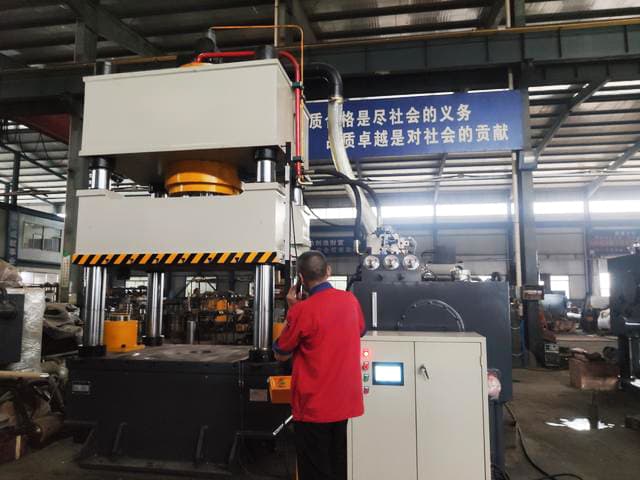
Maintenance of four column hydraulic press
Common faults and maintenance techniques for four-column hydraulic presses: Precision parts often feature in the hydraulic transmission system.
While hydraulic transmission in machinery is known for its convenience and labor-saving benefits, it is also prone to damage.
The main cause of this is a lack of understanding of its working principle and structural characteristics, resulting in an inadequate understanding of preventative maintenance techniques.
There are three primary factors that contribute to problems in the hydraulic system: contamination, overheating, and air ingress.
These three factors are closely related and can lead to additional problems if any one of them occurs.
Practice has shown that 75% of the issues in the four-column hydraulic press system can be attributed to these three factors.
- Deterioration of the working oil due to contamination:
- Overheating:
- Solution for air ingress: Clean and assemble the main precision parts in the system in a cleanroom to minimize contamination.
The cleanroom should have clean floors, closed doors and windows, and maintain a temperature of approximately 20°C.
Other common maintenance:
- For the hydraulic oil, L-HL32/GB1118-89 or N32/GB3141 can be used when the temperature is below 20°C, and N46/GB3141 can be used when the temperature is above 30°C. It is recommended to use 32# and 46# anti-wear hydraulic oil for the working oil, with an oil temperature range of 15-60°C.
- The oil should only be added to the tank after undergoing strict filtration by the oil industry.
- The working oil should be replaced once a year, with the first replacement not exceeding three months.
- Regularly lubricate the sliding block with oil and keep the exterior of the column clean. Spray oil before each operation.
- With a nominal pressure of 500t, the maximum allowable eccentricity of concentrated load is 40mm. Excessive eccentricity can lead to column strain or other undesirable outcomes.
- Calibrate and inspect the pressure gauge every six months.
- If the machine is not in use for an extended period, clean the surface of each component and coat with anti-rust oil to prevent corrosion.
1. How to select hydraulic oil for four column hydraulic press?
After identifying the characteristics of the oil used, such as viscosity, density, vapor pressure, air solubility, bulk modulus, anti-combustibility, temperature range, pressure range, lubricity, and compatibility, and selecting or equipping the hydraulic oil based on specific requirements, the issue of the working medium in the hydraulic system can be resolved.
However, improper usage can still alter the properties of the oil. For instance, it is commonly believed that the viscosity of oil at a certain temperature and pressure is constant, regardless of activity. In reality, the viscosity of the oil will significantly decrease after excessive shearing.
2. To ensure the stability of the four column hydraulic press, under the condition of using hydraulic oil
For hydraulic oil that has been in use for an extended period, the temperature range is determined by its oxidation and thermal stability.
Therefore, the hydraulic oil should be stored, transferred, and filled at a temperature below its initial oxidation temperature for a long time, and prevent contamination during storage, transfer, and filling.
Regular sampling and inspection of the oil should be conducted and a regular oil change schedule established.
Ensure adequate oil storage in the tank to facilitate heat dissipation in the hydraulic system and maintain the system’s sealing.
Immediately clean up any leaks that occur.
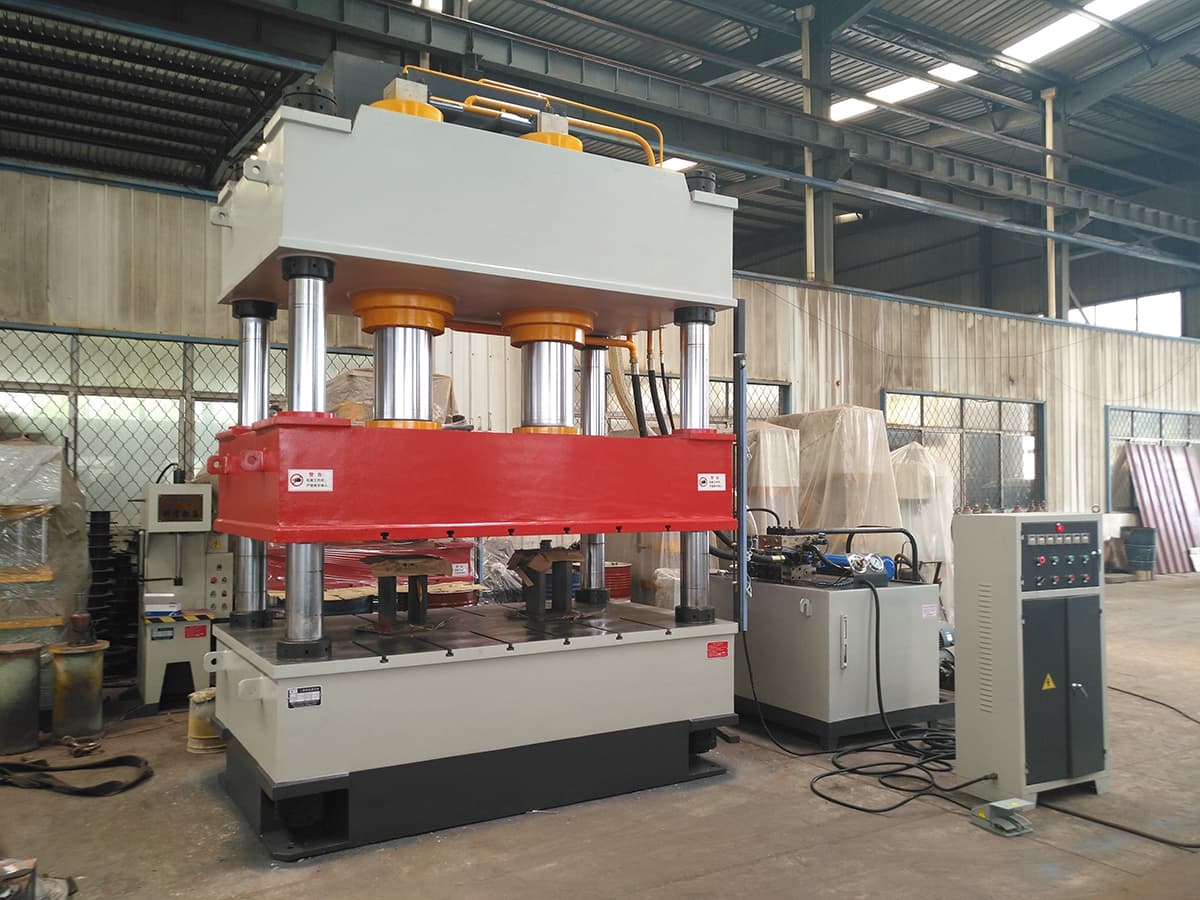
Troubleshooting of four column hydraulic press
Common faults and protection techniques for four-column hydraulic presses: Precision parts often feature in the hydraulic transmission system.
While hydraulic transmission in machinery is known for its convenience and labor-saving benefits, it is also prone to damage.
This is due to a lack of understanding of its operating principle and structural characteristics, resulting in an inadequate understanding of how to prevent and protect it.
The hydraulic system has three primary factors that contribute to problems: contamination, overheating, and air ingress.
These three factors are closely related and can lead to additional problems if any one of them occurs.
Practice has shown that 75% of the issues in the hydraulic system can be attributed to these three factors.
Action failure
- Electrical wiring issues: If the electrical wiring is not secure or connected incorrectly, check the circuit against the electrical diagram to resolve the issue.
- Insufficient oil in the oil tank: To troubleshoot insufficient oil filling, add oil to the appropriate level.
Sliding block crawling
- Air accumulation in the system or oil inlet of the pump: To troubleshoot this issue, check the oil suction pipe and run the system up and down several times while pressurizing.
- Improper accuracy adjustment or lack of oil on the column: To resolve this issue, readjust the accuracy and add oil to the surface of the column.
Downward with pressure
- Excessive support pressure
Troubleshooting: adjust the pilot valve and use the pressure no more than 1MPa.
- Sliding block slides seriously after stop
Cylinder port (or piston) seal ring leaks oil
Troubleshooting: check the sealing ring and replace it if damaged.
- Pilot valve preset pressure is too small
Troubleshooting: adjust the pressure value
- Poor sealing of cartridge valve port
Troubleshooting: check valve port and re fit
- The pointer of the pressure gauge swings badly
There is air in the oil passage of the pressure gauge.
Troubleshooting: loosen the connector to bleed when pressing up.
- Mechanical vibration of pipeline
Troubleshooting: check whether the pipeline is loose, and if it is loose, clamp it firmly.
- Pressure gauge damaged
Troubleshooting: replace the pressure gauge.
- At high speed, the travel speed is not enough and the upward pressure is slow.
Pressure compensation variable pump flow is too small.
Troubleshooting: adjust according to the requirements of the oil pump.
- Worn or burned pump
Troubleshooting: if the oil output from the oil drain of the oil pump is greater than 4L / min, it should be removed for maintenance.
- Oil leakage in the system
Troubleshooting: check the corresponding links of each part.
Pressure drop
- The valve ports involved in sealing are not tightly sealed or the pipeline leaks oil.
Troubleshooting: check whether the sealing fastener of the corresponding valve is damaged, and replace it if damaged.
Repair and weld the leaking pipeline and check whether the pressure commissioning is normal.
- The sealing ring in the master cylinder is damaged.
Troubleshooting: replace the sealing ring.
The above information provides a general overview of the situation. When a fault is identified during actual use, it is important to first analyze the cause before conducting any troubleshooting steps.
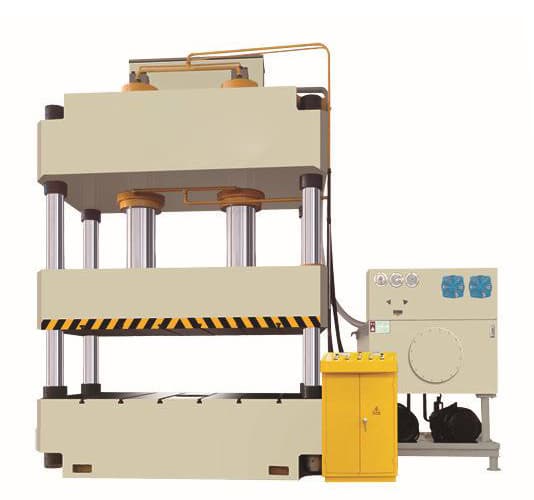
How to buy four column hydraulic press?
In China, the selection of a hydraulic press should be based on the nature of the production process, batch size, mold conditions, accuracy requirements, and other factors due to the variety of hydraulic press models and their differing levels of stiffness, accuracy, and usage methods.
The four-column hydraulic press is a widely used piece of equipment in industrial production, but it can be difficult to find a high-cost-effective option.
For those who frequently use and operate a four-column hydraulic press, it can be challenging to find a suitable piece of equipment.
It is recommended that purchasing partners determine their specifications based on their actual needs and follow the following principles:
1. You need to select the appropriate model and equipment according to your own needs.
① Before making a purchase, it is important to determine the shape and raw materials to be pressed, the desired output, and any special requirements for the four-column hydraulic press. The manufacturer should then be consulted to provide the appropriate model.
② When choosing a four-column hydraulic press, it is important to ensure that the pressure is adequate to improve the equipment’s lifespan and support future development. The nominal pressure should be higher than the actual working pressure.
③ The output of the four-column hydraulic press is not only dependent on the model, but also on the hydraulic system of the equipment. A fast system is important.
④ The stroke of the four-column hydraulic press should be sufficient to accommodate the size of the molded product and allow for easy removal from the mold.
2. Select the appropriate manufacturer
The quality of a four-column hydraulic press not only impacts its lifespan, but also affects production efficiency.
After determining the desired equipment model, it is advisable to reach out to multiple companies to gather information on hydraulic press prices, parameters, delivery methods, and other relevant details.
It is also recommended to visit the processing factory for an on-site investigation to assess the production scale, actual processing capacity, and the company’s technical capabilities in order to determine the quality of the equipment being produced.
(1) The appearance design of the four-column hydraulic press should be reasonable, with a uniform and smooth paint job and a smooth surface without pitting.
(2) During equipment testing, check for any abnormal noises or mechanical vibrations.
Test the pressure effect of the four-column hydraulic press and ensure that it operates smoothly during the test run.
See also:
3. Understand the manufacturer’s after-sales service
Many people do not have a clear understanding of the four-column hydraulic press. Installation and commissioning are crucial for the performance and efficiency of the equipment.
It’s important not to sacrifice after-sales service in the pursuit of a low price or assume that it is included with a high-priced piece of equipment. It should be specified in the contract as a separate clause.
When considering purchasing a hydraulic press, in addition to evaluating the aforementioned factors, it’s important to provide the press supplier with detailed requirements for performance, including safety, maintainability, installation cycle, and cost.
For the manufacturer, the key considerations include: production cycle, budget, mold design, workpiece structure, number of mold changes, external dimensions of the press, and the purpose of the project.
The advancement of science and technology highlights the importance of keeping close contact and communication with various hydraulic machinery manufacturers in order to make an informed and wise decision. This is the best way to ensure the selection of a high-quality hydraulic press.
